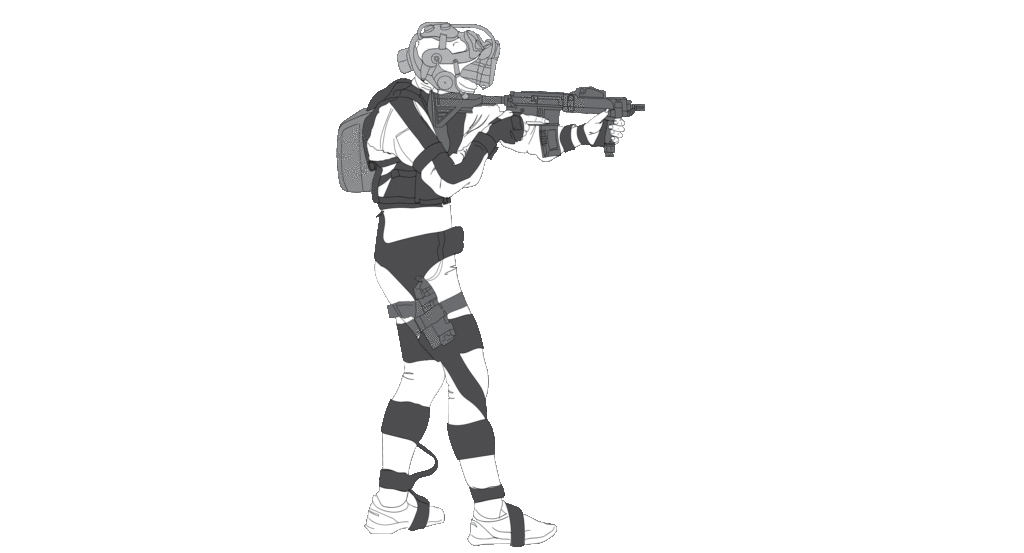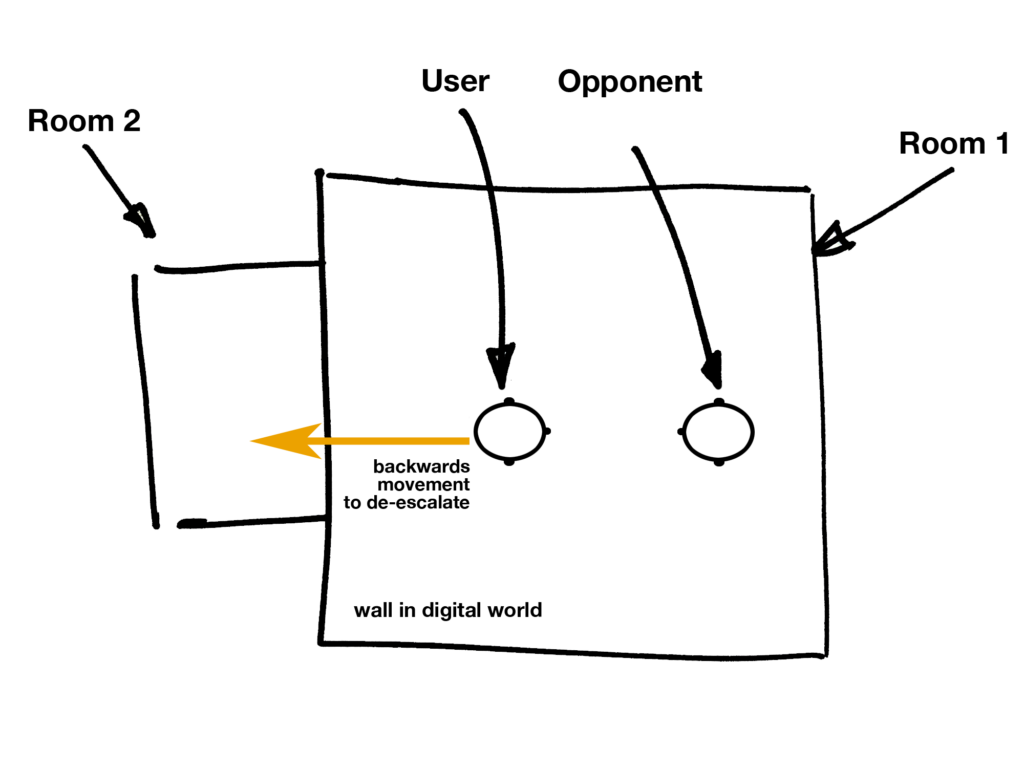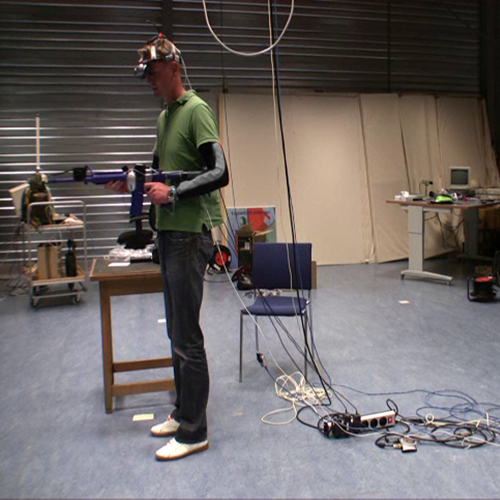Let’s get into more detail of what is needed to make this work.
How to Design your Virtual Reality Training System?
- To be immersed into the digital world
- Realism in graphics and sound
- A natural way of interacting with the digital world
- To interact with multiple users in the digital world
- To move freely
- To put on and remove equipment in approximately 5 minutes
- Bio-signal feedback
- A one-size-fits-all
- A hygienic solution
Design decisions become easier if there is:
- no need for physical interaction or
- if the number of users in VR in the same physical room is below 2 to 4.
After going through the design process, we ended up with the Smartvest as shown above for certain type of training: CQB, Small Unit Tactics, etc. In these situations, being able to have physical contact and quickly being able to use many different replica tools in VR is very important.
This one of the reasons behind the Smartvest.

R1: Users need to be immersed into the Digital World
R2: Users want realism in Graphics and Sound
In police de-escalation or military training, users want to be able to spot if a digital character at a distance of 3-10 meters is carrying a pen or a knife in its hands.
Everything in the digital world can be a trigger to decide and act.
The Math(ish) of the balance between Graphical Realism, Computing Power and battery life:

- Add a digital character = less power left for realism and/or smaller digital world and/or…
- Increase realism = less vegetation and/or less objects and/or ….
- Longer playtime on 1 set of batteries = less realism and/or …
R3: Users want a natural way of interacting with the Digital World
The speed of action and type of training: more cognitive or motor skills determine how natural interaction needs to feel with the digital environment. For example:
- To walk around, is it ok to use a small joystick on a VR controller, is it ok to use teleporting in VR or is real walking/running/crawling a requirement?
- Another example is physical interaction: is this necessary? If not, then this eliminates the need for capturing full body motion.
- To use certain tools replicated in the VR environment, is it ok to use a VR controller with buttons and a joystick or is a replica of the physical tool required?
- And if replica tools are needed, how many of these replica tools need to be used in VR at the same time?
Is haptic feedback, the experience of touch through force or vibration, necessary? If so, only on one point or throughout your body? This point is linked to natural movement: if you are using VR controllers or teleporting for locomotion, haptic feedback is a nice to have. If you are physically moving around, then it is a need to have to warn users when they are on the brink of walking through digital walls or other structural elements.
An example when this frequently happens: when users are facing forward but walking backwards in for example a de-escalation situation: without haptic feedback, users will end up in another digital room (or physical obstacle) if they keep walking backwards without having a warning.

Our smartvest has 12 integrated microcontrollers that are placed throughout your body. Each microcontroller gives you a bit of haptic feedback.
We can vary frequency and amplitude of the feedback giving trainees different cues with our software. For example: walking into a virtual wall, touching a virtual table or feeling a simulated character touching you on the shoulders.
R4: Users need to interact with others in the Digital World
R5: Users want to move around freely in the Physical World

No cables attached is easy when using wireless streaming from a powerful PC on the side to your VR headset. However this becomes a hurdle when there’s a larger number of users in the same physical location. The interference due to wireless VR streaming then becomes an issue and cables between a PC and VR device are needed.
To prevent this issue, you can use VR backpacks (= wearable computers). They’re worn by the user with a short cable from the VR backpack to the VR headset. These VR backpacks do need to be able to run at least 1.5-2 hours on one battery charge, otherwise training with multiple users becomes a logistical nightmare of changing batteries
R6: Users want to put on and remove equipment in < 5 minutes
In the end, production of training or rapid use in operations is a key argument for an organization to use VR as a tool. From an efficiency point of view, it’s counter-productive if the trainee has to wear 10-20 different devices, turn them all on, can get entangled in wires, cause damage, etc and the inverse again when removing equipment after training.
That’s why its best to have one piece of equipment that can be turned on/off with one switch, and has one hot-swappable power source.
R7: Bio-signal Feedback
R8: Users need a one-size-fits-all-solution
R9: Users need a hygienic solution
Conclusion
The Smartvest is a ‘SUIT’ that is completely programmable based on the needs of the user. Smart eh? Designed in The Netherlands, produced in the EU.